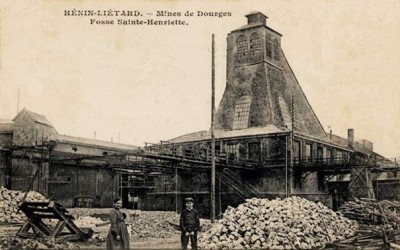Rassemblement National in France: when a radical-right organisation draws support among (former) Left voters
Jean-Baptiste Lebas, Marx Dormoy, Joseph Hentges.... They have two points in common: they are historic French socialist and communist personalities, and they gave their names to the streets of Seclin, a small town in north-east France.

But after more than 90 years of Communist mayors, the current town leader is a right-leaning independent. More importantly, in the last two French presidential elections, in 2017 and 2022, the majority of Seclinois voted for Marine Le Pen, leader of the radical-right Rassemblement National (RN).
Seclin is a bellwether in the post-industrial north-east, where closures of factories and mines since the 1970s have weakened in a region that once used to thrive. The RN has profited from the decline, attracting those who used to vote on the opposite end of the political landscape.
The emblematic supporter of left-wing organisations – the working-class ouvrier or prolétaire – is travelling towards the radical-right party of Marine Le Pen, especially in the former mineral fields of the north-east. In the first round of the 2017 presidential election, Le Pen took 40 per cent of the ouvrier vote across France. In 2022, she gathered 42 per cent.
The RN mayor of Hénin-Beaumont, Steve Briois – mobilising the RN's scapegoating of weakened groups in society - declares, “The Left has forgotten its fundamentals. It has supported minorities rather than the workers. Us, we defended them!”
While former left voters join the ranks of the RN, the short-term trend is of voters switching from the radical left to the radical right during the same election cycle. In the 2017 presidential ballot, among first-round supporters of the left candidate Jean-Luc Mélenchon, seven per cent voted for Le Pen in the second round. In 2022, the number rose to 18 per cent.
These ‘chameleon’ voters, rather than being attached to a particular position on the political or ideological spectrum, have a primary motive of expressing disappointment in the current liberal party in power or in the traditional centre-right and centre-left forces which ruled France for decades.
Care is needed in evaluating the extent of the rush from the left to the radical right. The majority of left voters, including 38 per cent of Mélenchon supporters, did help elect Emmanuel Macron during the second round of last year's presidential election. Loyalty to their parties' ideals included the desire to build the barrage républicain [Republican dam] against the extreme right.
However, the post-industrial north-east, and an increasing number of other regions, demonstrate this long-standing desire is under pressure. If Le Pen stealing voters was not enough, prominent figures within the Left are borrowing the terminology of the radical right, such as Fabien Roussel talking about 'sieve borders' at the Congress of his Communist Party.
The co-optation of the radical right's language might be a tactical move by Roussel and others, trying to stabilise a fluid electorate, rather than a change in the ideas of the Left. Even so, the rhetoric further weakens the foundations of the Republican dam.
In regions such as Seclin and its neighbours, the challenge for the French left is to convince the lost electorate to return to what was once a socialist heartland. But any success will be Pyrrhic if it is based solely on appropriation of the radical right's language, rather than a forthright and constructive response to the radical right's programme.
***
This article was written by Paul Mazet, a student who completed his master's thesis about Anglo-Saxon journalistic practices and the Iraq war (2003-2011) at the Université Paris-Cité. Paul is a freelancer based in Berlin.
The photo shows Mines of Dourges in the first decades of the 20th century, active during the thriving industrial times of Hénin-Beaumont, a town in the north of France administrated by left-wing mayors for several decades. (Source: Compagnie des mines de Dourges/public domain)